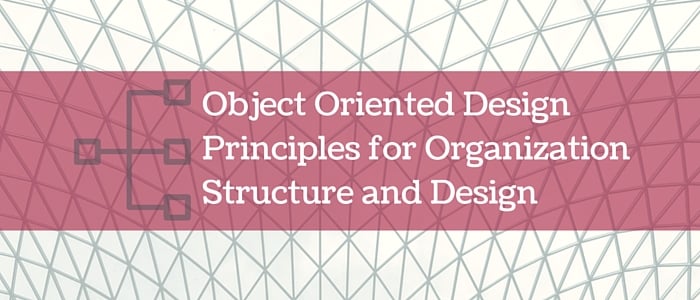With lot of confusion over some of the SCRUM artifacts and meaning of those, I have tried to prepare summarized list and explained meaning in simplified language. I hope this will be helpful for SCRUM Practitioners
| Term | Generic Equivalent | Description |
| Product Backlog | Feature List | A prioritized list of features, feature sets, technology and issues that determines the overall scope of the project that is used for iteration planning and progress tracking |
| Product Backlog Item | Feature | A self-contained unit of work the completion of which produces something of business value and which serves as the measure of project progress |
| Selected Backlog | Selected Features | The features, feature sets, technology or issues that are selected from the feature list that the team is committed to completing during a given iteration. The "selected backlog" is the output from the Planning Meeting |
| Development Sprint | Iteration | A single development cycle that includes all the activities necessary to turn a feature or set of features into functioning software. |
| Integration Sprint | Integration | Development cycle that occurs after 3 or more iterations the goal of which is to integrate all work to date and deploy a functioning system with the features developed to date |
| Sprint Backlog | Task List | The list of tasks for a given iteration necessary to develop the features, feature sets, technology or resolve the issues from the list of features committed to for a given iteration |
| Sprint Backlog Item | Task | A single task from the task list for a given iteration |
| Story/Effort/Complexity Points | Estimate | An estimate of the relative level of effort required to fully develop a given feature or set of features. Estimates are based on the relative size of features in the feature list compared to other features in the feature list on a unit-less nonlinear scale (1…2…3...5...8...13...) and do not related to function points, lines of code, duration or any other concrete scale |
| Sprint Velocity | Rate of Progress | The rate at which the team as a whole is completing development work. Velocity is determined by adding up the estimates for all the features completed in iteration. Velocity is used primarily for future iteration planning and tracking the progress of the project as a whole |
| Product Burndown | Project Progress Chart | A simple linear graph that plots features completed (based on their story point estimates) over time (i.e. each Sprint). The product burn-down allows prediction of project completion date and serves as an overall indicator of project health |
| Sprint Burndown | Iteration Progress Chart | A simple linear graph that plots task hours remaining over time (i.e. each day of the Sprint). The Sprint burn-down allows prediction of probability of completion of the features slated for a given Sprint and serves as an overall indicator of progress during the Sprint |
| Δ (Delta) Report | Status Report | A status report that is produced at the end of each Sprint that shows the product burn-down to-date, the final sprint burn-down, An a description and analysis of changes to the product backlog (items completed, items added or removed etc.) |
| Product Backlog Refactoring | Feature List Revision | The ongoing revision, reprioritization and re-estimation of the items in the product backlog. Product backlog refactoring is an ongoing process parallel to the development effort that is the responsibility of the product owner and stakeholders with input from the team. Changes to the product backlog can be incorporated into any subsequent sprint (but NOT the current one) |
| Sprint Planning Meeting | Development Planning | A meeting held at the beginning of a Sprint to determine which backlog items the team will commit to developing during the Sprint. Attended by the team, the Scrum Master, the Product Owner and any interested stakeholders |
| Sprint Definition Meeting | Task Definition | A meeting held by the team immediately after the Sprint Planning Meeting to determine the tasks required to develop the selected backlog for the Sprint with an estimation of the hours required to complete each task |
| Sprint Review | Feature Demo | A meeting held at the end of each sprint where the team demonstrates the features/functionality it has developed in the Sprint that was just completed. All interested parties are encouraged to attend an provide feedback |
| Sprint Retrospective | Lessons Learned | A meeting held by the team immediately after the Sprint Review to discuss any lessons learned in the Sprint that was just completed and brainstorm ideas for improving the development process |
| Product Owner | Project/Product Manager | The person responsible for the product backlog |
| Scrum Master | Development Manager | The person responsible for the development process and making sure that nothing is blocking the team |
| Scrum Team | Development Team | All the people required to develop the selected backlog including architects, developers, testers etc. There are explicitly no titles on the team aside from "team member" |
| Product Increment | Result | The result of a Sprint that is a releasable functioning piece of software the comprises a subset of the total features needed for the system |
| Incremental Release | Interim Release | A bundling together of the features from 3 or more Sprints into a production release |
| Daily Scrum | Daily "Stand-up" Meeting | A brief (15 minute) daily meeting where team members provide status by answering three questions: What did I do yesterday? What am I doing today? What (if anything) is blocking my progress? |
| Sidebar | Meeting | Any other meeting apart from those already described that is necessary for project progress |
| Requirements Workshop | Analysis & Design Meeting | Meetings with stakeholders and SMEs to flesh out the requirements for a given feature or function if they do not already exist or existing requirements are insufficient. Or if design decisions are required on the part of the stakeholders, SMEs or product owner |
| Task Board | Task Board | A white board that keeps track of tasks and task statuses for a given Sprint |
| War Room | Project Room | A room set up specifically for project activities including the daily meeting |
| Time-Box | Schedule "Window" | A predefined and finite period of time during which an activity occurs. For example a Sprint is "time-boxed" to 4 weeks. The Daily Scrum is "timeboxed" to 15 minutes etc. |





